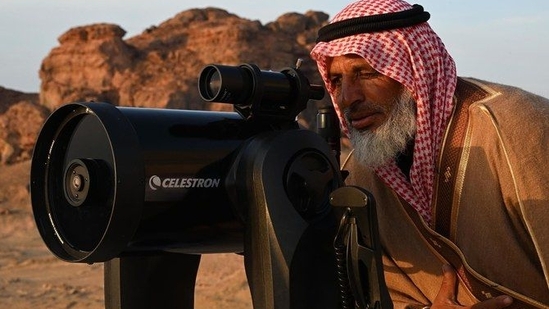As the Islamic lunar year draws to a close, anticipation mounts across the Muslim world with eyes fixed on the heavens, awaiting the appearance of a slender crescent moon. This is no ordinary celestial event—it marks the beginning of Dhu al-Hijjah, the twelfth and final month in the Islamic calendar, and signals the arrival of one of the most sacred seasons in Islam.
For Muslims, the lunar calendar, known as the Hijri calendar, governs the religious rhythm of the year. It comprises twelve months, each beginning with the visual sighting of a new crescent moon. Unlike the Gregorian calendar which follows the solar cycle, the Islamic calendar is based entirely on the lunar cycle, making it approximately 10 to 11 days shorter each year. As a result, significant events such as Ramadan, Hajj, and Eid celebrations shift across seasons over time.
Dhu al-Hijjah carries profound religious and spiritual significance. The first ten days of this month are especially revered, widely regarded as among the holiest in the Islamic tradition. It is during this period that Muslims intensify acts of worship, charity, and reflection. For the millions who embark on the sacred pilgrimage to Mecca, known as Hajj, these days represent the fulfilment of a lifelong spiritual goal. The Hajj is one of the five pillars of Islam and is obligatory for every financially and physically able Muslim at least once in their lifetime.
A key date during Dhu al-Hijjah is the 9th day, known as Arafat Day. On this day, pilgrims gather at the plain of Mount Arafat in Saudi Arabia, engaging in deep prayer and supplication, seeking forgiveness and mercy. This event is regarded as the spiritual climax of the Hajj, and for those not on pilgrimage, it is a day of fasting and devotion. The following day, the 10th of Dhu al-Hijjah, marks Eid al-Adha, lso known as the Festival of Sacrifice.
Eid al-Adha commemorates the story of Prophet Ibrahim (Abraham), who, in a profound act of faith and obedience, was willing to sacrifice his son in submission to God’s command, a trial that ended with divine intervention and the provision of a ram in his son’s place. To honour this, Muslim families around the world sacrifice livestock, commonly sheep, goats, cows, or camels, and share the meat among family, friends, and the less fortunate, reinforcing themes of generosity and community.
In Nigeria, as in many parts of the world, the announcement of the crescent moon’s sighting is often made by religious authorities such as the Sultan of Sokoto or national moon sighting committees, and it garners nationwide attention. The declaration sets the pace for the commencement of Hajj rites for pilgrims departing from cities like Abuja, Lagos, and Kano, while also prompting millions at home to prepare spiritually and logistically for the Eid celebrations.
Therefore, the sighting of the crescent moon of Dhu al-Hijjah is far more than a symbolic start to another month. It is a powerful reminder of faith, sacrifice, and unity, a moment that aligns the hearts of Muslims across continents, from the streets of Kaduna and Ilorin to the deserts of Arabia and beyond. It is a divine call to worship, remembrance, and compassion, rooted deeply in centuries of tradition and spiritual heritage.

